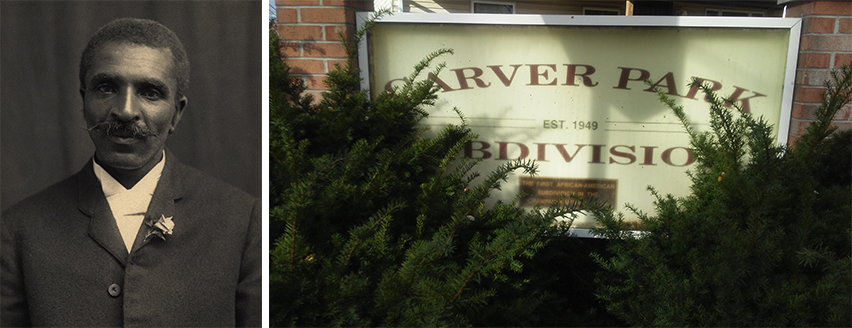Carver Park
Image Credit:
George Washington Carver, c. 1910, photographic restoration, Wikipedia Commons
North of Bradley Avenue at Carver Drive
In 1951, African American civic leader Charles Phillips saw a need for quality single-family housing in the Black Community. So, he put together a “grass roots” coalition of friends and acquaintances to buy ten acres of farmland and hired developer Ozier-Weller Homes. Each family put up $350.00 to develop the 70-home subdivision named after African American scientist and inventor George Washington Carver. It was Champaign-Urbana’s first subdivision financed and built by African Americans.
Continue Reading History
George Washington Carver: An Uncommon Life (Credit: Iowa PBS)
Decade:
1950-1959
Location(s):
- Champaign, Illinois
Additional Champaign Trail Sites

Make a difference.
The Trail relies on the generosity of private and public donations. With your gift, you help ensure that the Trail is a free, accessible experience for all. You also help make our vision—to inspire conversation, expand understanding, and contribute to a better society—a reality.
